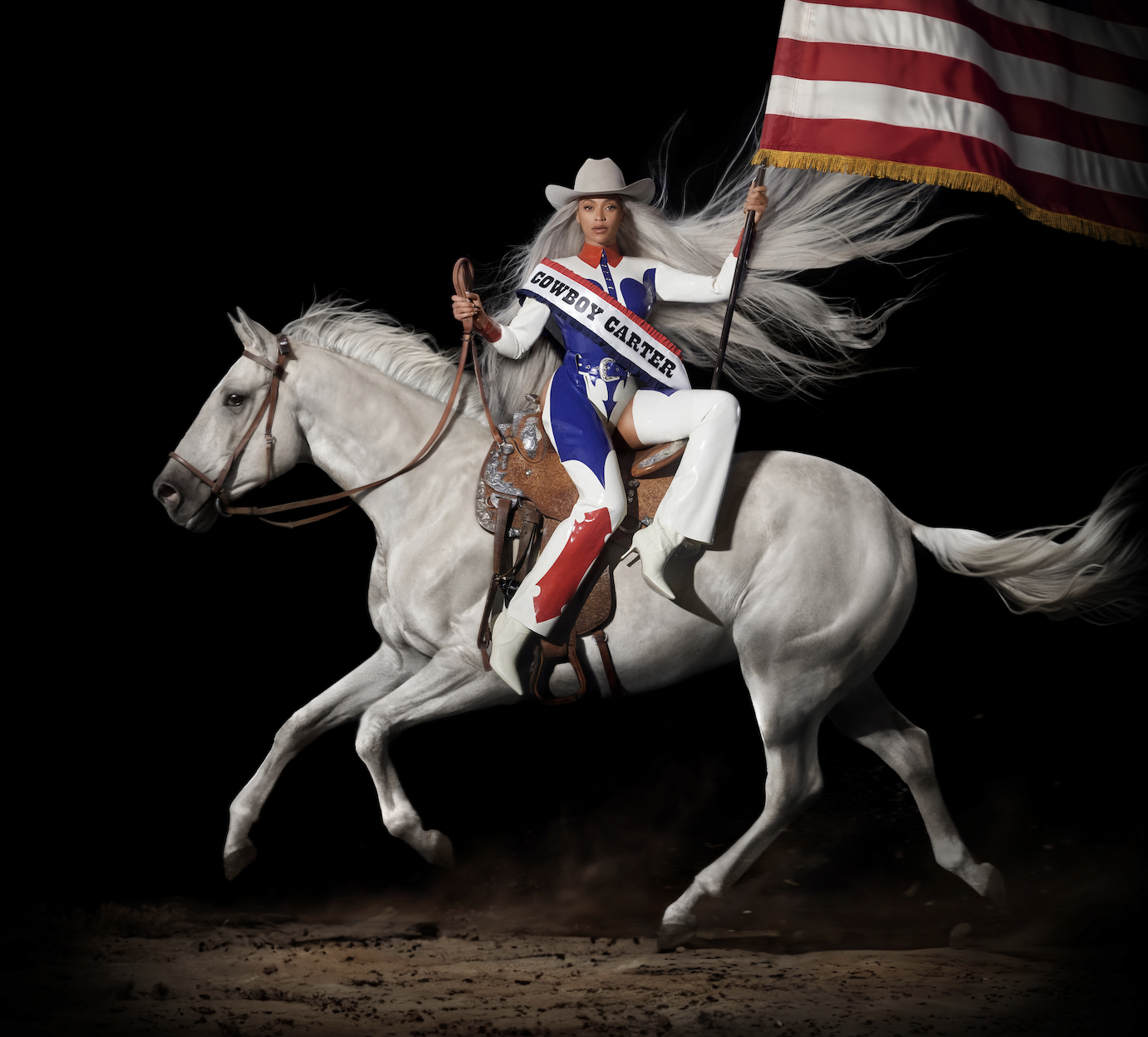Storytelling plays a role in any business. Creating the perfect pitch, working on a killer rebrand, or introducing a shiny new product feature to the world – all of these require the ability to weave a brilliant and powerful story. But it’s a craft that needs to be carefully developed and honed.
In need of inspiration? Look no further than Beyoncé, one of the finest storytellers in the music industry. Her latest studio album Cowboy Carter takes us on a glorious musical journey that transports you straight into a Western movie, with Beyoncé citing this film genre as a key inspiration for the tracklist.
Cowboy Carter has received universal acclaim from critics, who’ve praised the album’s unique blend of genres and how it celebrates Black country music pioneers who have historically gone unrecognised.
As well as being an incredible musical feat and breaking streaming records, there are plenty of things we can all learn from Cowboy Carter to apply to everyday storytelling. Here are three of its key lessons.
1. The power of persona
In a business context, we talk about personas a lot in terms of who we’re selling to. But when it comes to telling stories that make an impact, you need to be equally as laser-focused on your persona and how it contextualises what you’re saying. Does the perspective you’re telling your story from match up with what you want to communicate?
Across Cowboy Carter’s 27 dynamic tracks, Beyoncé embodies several different personas as she explores the genres of country and Americana, this music’s roots in Black American culture, and her family’s ties to the American South.

Two especially distinctive characters come through in back-to-back tracks ‘Jolene’ and ‘Daughter’.
The former, a cover of the Dolly Parton classic — introduced on the album by the iconic country star herself — sees Beyoncé adopt the role of a woman taking on a rival for her man’s affection. But, unlike Parton’s more vulnerable plea, Bey’s ‘Jolene’ takes a more threatening approach as she dares another woman to try and steal her partner. In switching up the character who is telling the story, Beyoncé provokes a completely different response from the listener than Parton’s original ‘Jolene’.
Continuing the theme of infidelity, the haunting ‘Daughter’ finds Beyoncé playing the role of a scorned lover driven to violent fantasies of murder. The song’s otherworldly ambience is heightened by a beautiful interpolation of the Italian aria “Caro Mio Ben”, as she reckons with her own similarities to her father. Despite the themes of the song harking back to Beyoncé’s iconic Lemonade album, which unpacks infidelity in her marriage, ‘Daughter’ makes us view her as a completely different character because of how vividly she conveys these overwhelming fantasies.
More broadly throughout the album, Beyoncé plays the titular Cowboy Carter, a character that shines through in every lyric and vocal technique as she explores and inverts classic tropes of the genre. Her polished characterisation brings the listener into the world she’s creating and immerses us in the vivid stories she tells across the musical journey.

2. Putting unexpected twists on something classic
Just because you’re trying to do something fresh and unique, it doesn’t mean you should be afraid to reference other people or their work when telling stories.
In fact, offering your own take on something pre-existing is an impressive skill that can lend itself to brilliant storytelling, because you give your audience something to relate to. We naturally connect with things that feel familiar to us, so being able to thread well-known ideas and concepts into your stories can make them even more compelling — and it’s something Beyoncé does plenty across Cowboy Carter.

In addition to covers of ‘Jolene’ and The Beatles’ ‘Blackbird’, Cowboy Carter features many samples and interpolations of classic songs that are stitched together to create something brand new that’s still relatable and accessible to her audience.
A perfect example of this is my personal favourite song from the album, ‘Ya Ya’. The song blends a sample of Nancy Sinatra’s ‘These Boots Are Made For Walkin’ with an interpolation of The Beach Boys’ ‘Good Vibrations’ to create a one-of-a-kind listening experience that nods to the 1950s and ’60s music scenes while sounding completely fresh for today’s audiences — and totally authentic to Beyoncé.
3. Embracing collaboration
If you’re telling a story on behalf of an entire business or brand, collaboration is king. You want to welcome as many perspectives and ideas as possible to feed into your storytelling and create something rich and multi-layered that engages your audience.

Just look at Beyoncé, who collaborated with dozens of artists across a range of genres and generations to make Cowboy Carter a vivid piece of art and storytelling.
The songs include writing credits from music industry icons like Pharrell Williams and Nile Rogers, while also welcoming contributions from rising stars such as the UK’s own Raye and Arlo Parks.
You may worry about the fact that ‘too many cooks spoil the broth’, but as long as you’re collaborating with people who understand your vision, your audience, and what you’re trying to communicate, you’ll find that working with others to refine and polish your stories is creative gold dust. Sometimes, the most impactful collaborations come from unexpected places — think Heinz x Lick Paint, Krispy Kreme x PrettyLittleThing, and Greggs x Primark to name just a few.
Fundamentally, at the heart of any great story is authenticity. When announcing the release of Cowboy Carter, Beyoncé said: ‘This ain’t a Country album. This is a “Beyoncé” album.’ She backed up this mission statement with a musical tapestry weaved together with influences from the past and present, a blend of genres and characters, and strong collaboration. Similarly, you need to weave different elements together in a way that’s true to you and rooted in a deep understanding of the subject when you tell your own stories.
Get that right, and you’ll soon possess storytelling skills that even Queen Bey would be envious of.
Discover more lessons in storytelling — this time from nineteenth-century content marketers.


